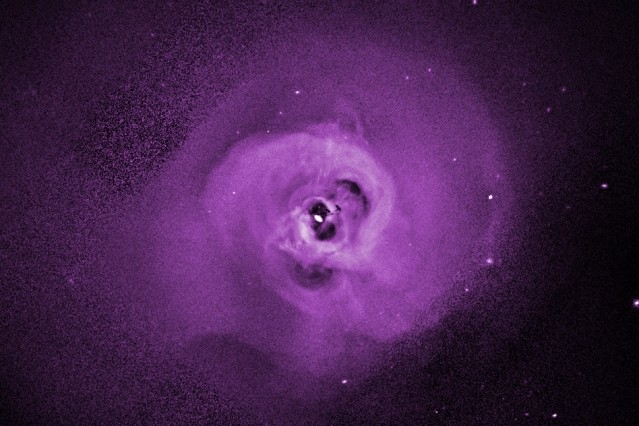Japan's Hitomi spacecraft was originally launched in order to detect supermassive black holes however, a month after its launch last February, the probe lost contact with ground mission control. The unmanned space observatory may have been unable to finish its main mission however, mission scientists were able to reveal some new science obtained by the craft, during its short life.
During this time, Hitomi obtained crucial data that involves observations of the Perseus Cluster, which is a massive group of galaxies, amounting to thousands, and is estimated to measure 2 million light years across, which is also the largest cosmic object ever seen in the universe.
The gas core of this colossal galaxy cluster was seen with slow movement than first predicted by astronomers. Even if this cluster did seem to be teeming with activity and energy, its core is apparently host to a supermassive black hole, which can affect the total kinetic movement of this structure, that poses as a mystery to astronomers.
According to Eric Miller of the Kavli Institute for Astrophysics and Space Research at MIT (Massachusetts Institute of Technology), the gas in this regional core is expected to be mixed up, however, it's not. This suggests an unusual, really quiet activity compared to the chaos seen from the black hole.
NASA along with JAXA (Japan Aerospace Exploration Agency) launched Hitomi as an X-ray observatory to study and record the most powerful cosmic events in the known universe. Its main mission is to examine galaxy clusters, supermassive balck holes and supernova explosions. These powerful cosmic events emit massive amounts of X-ray beams that can reach Earth.
Hitomi targeted the Perseus Cluster which is some 250 million light years away from Earth and for one month that Hitomi was in operations, the spacecraft recorded powerful X-rays emanating from this distant galaxy cluster. Hitomi detected iron and hydrogen, including crucial data such an temperatures within the cluster.
Its untimely demise occurred after studying this cluster, when the probe began to lose out of control in orbit, as its solar panels caused the spacecraft to hurtle in space, which led to the doomed mission. After this incident, mission controllers lost contact with the spacecraft which was initially planned to be in operations for another three years. On April 28, mission scientists called off any last effort to regain contact with the lost probe.
These new findings are published in the journal Nature.



























